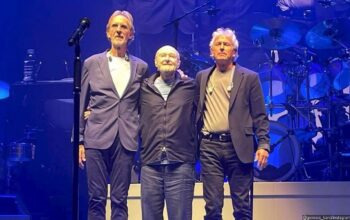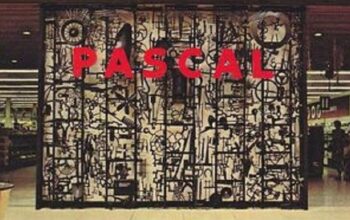Zedd – Clarity (2012)
As a dance song, Clarity is an absolute monster, certainly one of the great crossovers between EDM and pop since, well, ever.
As a matter of record, the songwriting has been credited to four people – DJ/Producer/Musician Anton Zaslavski (aka Zedd), fellow DJ/Producer Porter Robinson, singer/songwriter Matthew Blair (aka Koma) and singer/songwriter Skylar Grey. A veritable shitstorm of controversy has swirled in the aftermath of its release over who did and didn’t write what (Zaslavski and Blair each claimed full credit for the lyrics, Robinson absolved himself of any credit for the song altogether). I believe this much: production and mixing notwithstanding, it didn’t take four people to craft this piece of music. I’ll allow one for the music, one for the lyrics and one for the production and mixing. And I doubt the first two were equally contributive.
The electronic original is a force of nature. The verse and chorus – there’s no third-section bridge/interlude/development, it’s just not that kind of song – are coarsely diced over the song’s 4:32. The dance-mix checkerboard includes two brief breakdowns and two exhilarating swells of synthetic drums and keyboards that could stir the dead. The singing allegro of feature voice Loui Rose (Allen, aka Foxes) soars over an electrifying pulse and a dense polyester instrumental texture.
The unplugged version is 180 degrees from the mothership. There is no percussion whatever, indeed no rhythmic hint absent Anton’s lazy left hand that serves to cut the meter underneath the otherwise unchanged tempo of the voice melody (in accenting half- rather than quarter-notes, the song sounds like it’s half the speed; it’s not). Gone are the murmuring intro, the dance-mix interludes that send us half out of our minds, the synth effects and the moaning whole-bar backing vocals set in a unison ideal for dancefloor delirium. Basically, the E and D are gone; question is, do we have enough M?
As the remaining blocks of the song are butted together, we’re left with a double verse-chorus (plus repeated coda) that shaves a full minute off the original and leaves Loui’s tremendous voice in full exposure. Zaslavski’s piano accompaniment is wisely sparse. Indeed, it carries the full chords of the cardinal version, and little more. Regrettably, there are some post-production SFX added to the voice and accompaniment, but it’s nothing that plugs the song back in, so to speak. Zedd’s gotta zedd.
But this soft version not only works, it’s actually quite moving. It takes a manic party mixer and transforms it into a plaintive, introspective love bug. How the hell does that happen?
For a good song to be adaptable to such different treatments, the basic musical components – harmony, melody, rhythm and lyric – need to stand on their own. There needs to be some there there.
So where’s the there that we hear here?
In music school we did a lot of what’s called ‘contour analysis’. Basically, analytics for music geeks. There’s some notation here but don’t be scared, I’ll walk us through it.
On the unplugged version from the beginning to 00:13, listen to Loui’s voice. Here’s what she’s singing:

Don’t sweat it if you never learned to read music, the lyrics under the stafflines will tell you where we’re at. Notice that some noteheads are in red. Those are the notes I’ve identified as significant in the melody’s contour (i.e., tonal shape). How do you decide which notes are important? There are a couple of parameters that we’d consider: is it the highest or lowest note of the phrase? Does it fall on a beat? Does it fall on an important word of the text? Is there a janky chord change happening underneath? It’s somewhat subjective, and another analyst might come up with some different highlights, but for a relatively simple melody like this one, there won’t likely be much difference of opinion. In the phrase above, the beats score highest because the harmony stays constant and the rhythmic formula repeats in the first two bars – an easy call.
Now listen to the next passage (from 00:30 to 00:37). Here’s the notation:

The first two red notes are a bit higher and move up incrementally. Those two low notes are of little consequence because they’re so short and not on a downbeat.
Then listen to the final melodic phrase, which makes up the refrain or chorus (00:45 to 00:52). It looks like this:

That high note on ‘our’ is an easy choice – it’s the highest note in the whole vocal part. The first note of ‘tragedy’ is also an obvious pick because the word is rhythmically accentuated and it’s an important note of an important chord in the harmony (don’t worry if you don’t know why). The last red note, the C, is less obvious, but only because it’s delayed by the B before it on the word ‘you’; the C on ‘my’ is where the melody wants to rest.
Why am I boring you with all this pedantry? Look what we get when we extract all the red notes (I’ve omitted the repeated ones):

There’s a definite shape to this whole journey (which I highlighted with the straight lines). It starts in a low, downward phrase (the first three notes), then moves upward with a detour to build the drama (the next four notes), then explodes on the high note before settling back (the last three notes). When we talk about a musical story arc, at least as far as a melody goes, that’s what we mean. It’s just like a movie plot with its ups and downs, its rise in tension and complexity, its climax and relief.
One last goodie: look at the third ‘bar’ of the key notes above (with the E, B and C). Now listen to the backing vocals in original dance version (at 3:02). Notice anything? They’re the same notes! [ed. two short notes are added as a cadence]. That rapturous chant that swells to the full, euphoric refrain – the very climax of the dance version, both musically and on the dance floor – is grafted from the song’s own melodic climax. When blatherers (like me) go on about musical genius, that’s the kind of thing they’re referring to.
Why does the unplugged version of this song work so well? It works because the whole musical story is told in the melody, and when everything else is stripped away from it, the basic beauty of the song is in sharp relief. Why does the dance version work so well? It works because Anton Zaslavski understood the music well enough to develop its storyline into a dancemix drama. Whoever wrote it.
Say what you want about EDM DJs; it takes a true musician to deliver true music.



